Christmas decorations of the times of the USSR: varieties and characteristics
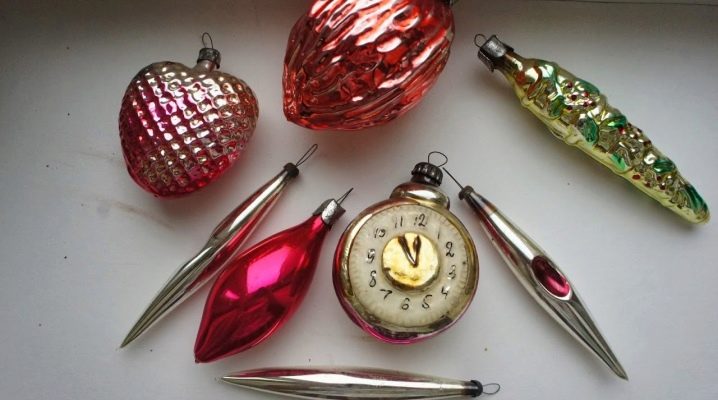
The older we get, the more often there is a desire to return to a carefree and happy childhood, and this feeling is especially strong on New Year's Eve. Nowadays, more and more often you can find a Christmas tree decorated in a European style, and this only makes you want to dress up your forest beauty in the best Soviet traditions, be sure to put cotton wool on it, which will imitate snow, and put a cotton Santa Claus together with your granddaughter Snow Maiden.

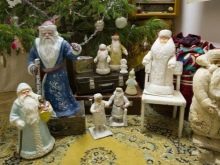
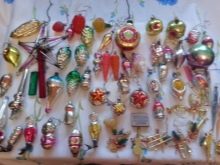
History of origin
In Soviet times, the toy has gone through a lot, but we will start from pre-revolutionary times, when the tradition of decorating a New Year tree first appeared.
In Russia, for the first time, they began to celebrate the New Year and decorate conifers under Peter the Great. It was during one of his travels in Europe that he saw a beautiful coniferous tree decorated with apples, sweets and tangerines. The future emperor liked the spectacle very much, and therefore, as soon as he came to power, a decree was immediately issued, according to which all the inhabitants of Russia were obliged to put a juniper or pine tree in their home before the New Year and decorate it with various fruits and sweets.
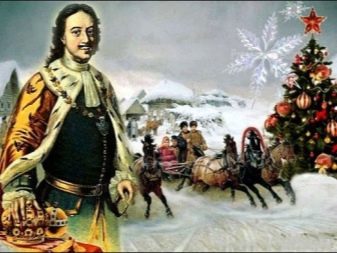
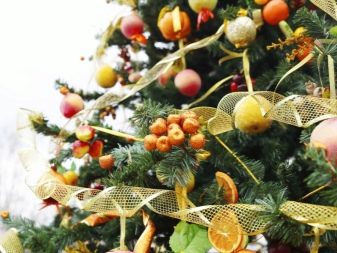
However, when Peter I died, the tradition of celebration gradually faded away and gained new strength only under Nicholas II.
In those years, the Christmas tree decor was intended to emphasize abundance, luxury and high social status. Most of the toys were brought from Germany, although in the middle of the 19th century artels were created that produced sparkling tinsel, sequins and iridescent metallic threads.
At the very beginning of the First World War, German prisoners taught our craftsmen to make glass products, however, the revolution that followed soon after this changed the fate of the winter holiday in the state.

In the late 1920s, the celebration of the New Year was strictly prohibited as a manifestation of bourgeois life. The tree was described as a "priest's relic", and even the artists tirelessly mocked the decorated pine in their caricatures.
However, in 1935, the party's policy changed. It was at that time that prominent public figures of that period made a statement about the return of the New Year celebrations. This was due to the fact that in tsarist Russia, rich and prosperous officials arranged luxurious New Year's holidays for their children, and the children of workers and peasants were forced only to spy on them through the windows and envy the fun of the celebrating rich. So it was decided to return the holiday to the common people and to please the children of the working population of the Soviet Union.
However, at that time the manufacturers of Christmas tree decorations faced a rather difficult task - to transform the Christmas pine into a communist one.
And the solution was found - the manufacturers mastered the production of thematic products. So, angels with wings were transformed into pioneers, and the Christian star of Bethlehem turned into red.



A special manual was published, in accordance with which the New Year's tree was dressed up. A scarlet five-pointed star must have been attached to the top of the head, trains, airplanes, armored cars and other symbols of Soviet people had to be hung along the edges of the branches. However, in the center, closer to the trunk, small bonbonnieres, checkers and pyramids were allowed.
Times changed, the style of government changed, and gradually toys with symbols of workers and peasants were replaced by images of fairytale heroes., animals, and later they were replaced by the usual balls, white snowflakes and other bright, beautiful and, most importantly, very kind toys.
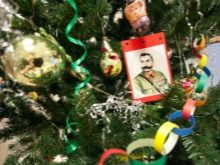
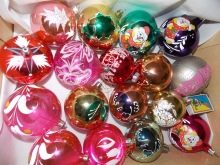

Views
Even during the Second World War, they tried to decorate the New Year tree in homes as a reminder of a peaceful existence and a symbol of victory over the enemy. However, the industry in those years spent all its capacity on the needs of the front, so New Year's decorations were made from military waste. So, toy tanks and cannons were made of tin, and metal shavings were used to make five-pointed stars and snowflakes.
In those years, homemade toys were widespread, which were made from what came to hand. Cardboard, strips of fabric and even eggshells were used as raw materials, and at the front, soldiers created a mood for themselves with garlands of figures that were made from cotton wool, bandages, rags and even shoulder straps.
The most typical toy of that time was Ilyich's ordinary burned-out light bulb. It was painted, twine attached and hung on the tree.
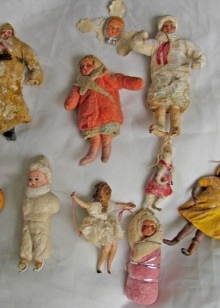
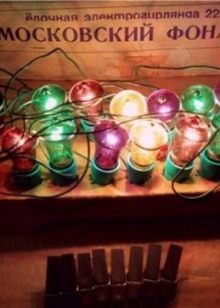
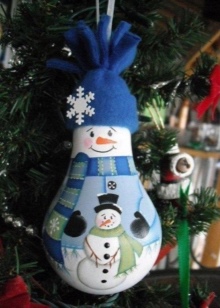
After the war, people needed a holiday more than ever, so since 1946 the production of Christmas tree decorations was fully resumed, and a few years later, toy design became much more peaceful, kind and magical. In 1949, in honor of the anniversary of the birth of Alexander Pushkin, decors were released depicting the heroes of his most famous fairy tales, a little later, decorations appeared based on the works of "Cipollino", "Doctor Aibolit", "The Frog-Traveler", "Little Red Riding Hood" and others.
At the very beginning of the 50s, glass beads became widespread., as well as a wide variety of birds, animals, musicians and circus performers. In addition, houses and snowflakes were in great demand, especially as if “powdered with snow”.
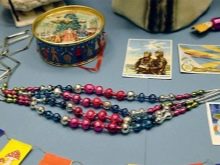
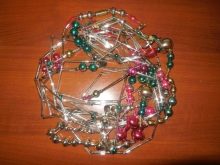
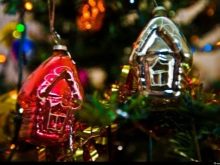
In the era of stagnation, many papier-mâché toys were produced in the USSR. The country did not experience a shortage of paper, so the technique was to the liking of domestic technologists.
The assortment was mostly made up of images of animals and figurines of people. From above, they were covered with a layer of berthollet's salt, due to which they became smoother and slightly shiny.
By the way, these days such items are highly valued among collectors.
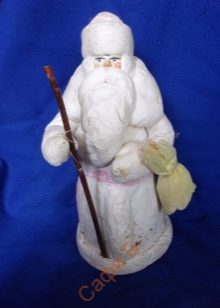
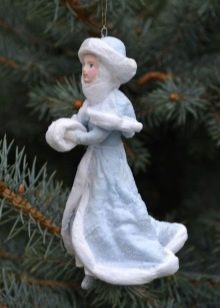

Design
The design of Soviet toys can fully tell about how the policy of the party and government changed.
The very first toys were designed to carry the ideas of communism to the masses, so they included the symbols of the Soviet state (sickle, hammer, five-pointed star), and also demonstrated the strength and might of the country (tanks, planes, cannons, airplanes and figures of soldiers with dogs).
At the end of the 30s, the Arctic Circle was actively explored in the USSR, which was also reflected in the style of jewelry. Toys symbolizing polar bears, penguins, hockey players and polar explorers are widely spread. At the same time, the first serious steps to conquer the sky began, which was immediately reflected in the Christmas tree decorations - small airships and parachutists were used.


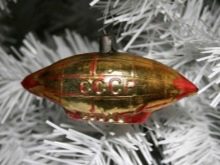
After the overwhelming success of the film "Circus", the demand for toys depicting clowns, trained dogs, elephants and bears rose sharply, and a special place was occupied by negroes (they say that their release was organized on the orders of Stalin himself, who really liked this film).
At the time of Khrushchev, when the main emphasis in the Soviet Union was placed on the development of agriculture, toys with images of vegetables quickly became fashionable. On the Christmas trees of the Soviet people, almost everything "grew" on clothespins: grapes, apples, pears, lemons, cucumbers and even tomatoes. But a special place was occupied by corn. Probably, it was difficult to find a house that did not have this yellow queen of the fields.
It should be noted that it was she - Khrushchev's corn - that became the one and only decoration that has since been produced continuously throughout the entire period of the existence of the USSR.

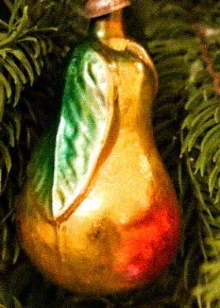
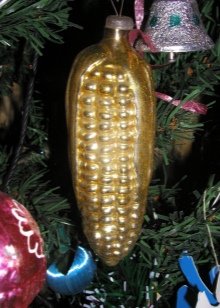
A little later, we set up the production of "babies".They were tiny copies of large Christmas tree decorations: balls, figurines, animals. Everyone liked the idea, so such toys were decorated with coniferous branches or small table Christmas trees in almost every home.
Gagarin's first flight into space was a landmark event in the life of citizens, and, of course, this was immediately reflected in the design of Christmas tree products., giving a start to a truly "space era" in the production of New Year's decor. Cheerful astronauts, miniature rockets and satellites appeared in droves.
In the mid-60s, experiments with form began. It was then that they mastered the production of toys that are already more reminiscent of modern ones: balls and icicles with small grooves and frost. And some of the toys were even covered with luminescent paint.
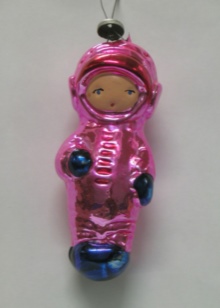
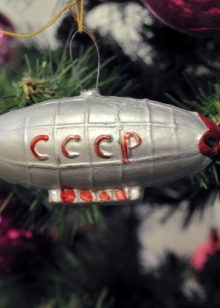

In 1965-1969, the era of standardization came, so the production of New Year's decorations became serial. This led to a significant reduction in the range of manufactured models. And by the beginning of the 80s, only New Year's and fairy-tale themes remained.
During the same period, it became popular to hang metal foil rain on the Christmas tree. Sometimes it was hung on the tree so tightly that it was difficult to see not only the decorations, but also the fluffy branches of the green beauty. This led to the fact that themed decorations became much less, and they themselves became geometric and abstract.
In the 90s, the absolute leadership was given to balls, bells and houses. A characteristic feature of the jewelry design of that time was the abundance of luster.
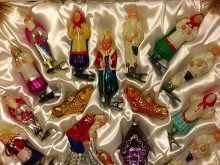

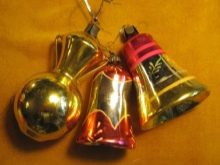
At that time, Western trends began to influence fashion, so by the mid-nineties, decorating a Christmas tree in one color became at the peak of popularity. This trend of that period took root in our compatriots, therefore, even now, in many homes, you can find Christmas trees in which both balls and garlands are selected in the same shade.
The balls in those years were very beautiful, their characteristic feature was a small round depression. When light fell into it, an extraordinary effect arose, as if a fabulous illumination flashed. Since the New Year comes at midnight, toys with the image of a clock were in wide demand. Often they were given the most central place on the tree. And, of course, a star adorned the crown of the head.
And under the New Year's tree, they certainly placed figurines depicting the main wizard, Santa Claus and the Snow Maiden. Most often they were made from pressed cotton wool, papier-mâché or plastic.

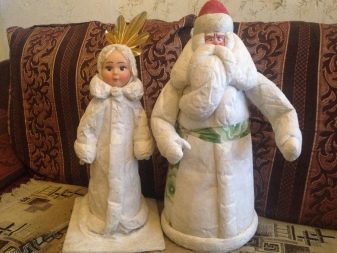
How to do it yourself?
It's not so easy to make toys with your own hands that would look like Soviet ones, but it's worth trying to recreate the atmosphere of that era.
Papier-mâché jewelry is very cozy and kind.
To make a unique handmade decoration, you need to soak cardboard or any other unnecessary paper in water. When the mass is soaked, squeeze it out and grind it well. If there is a blender in the house, it will be very useful. The paper pulp is mixed with a mixture of PVA, starch and water, taken in equal quantities, and then a figure is sculpted, carefully grinding all irregularities and leaving no voids. When the piece is ready, it is left to dry and then painted.
To make it more radiant and even, some sprinkle the surface with ordinary table salt or sugar - they betray a mysterious shimmer and hide defects.
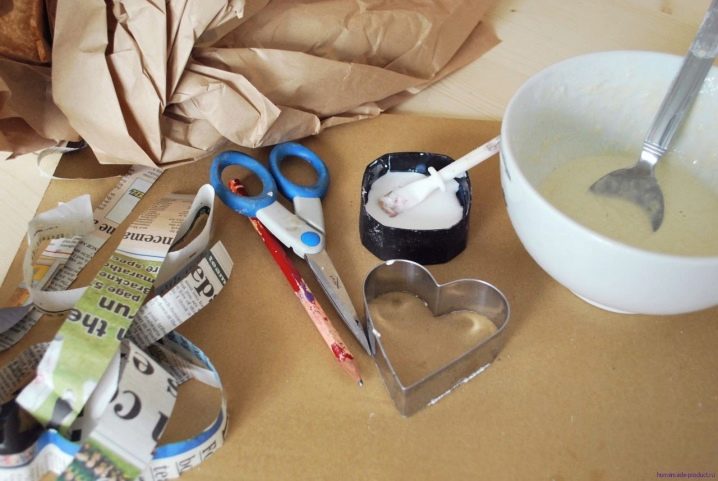
There is another option for making such toys. A figurine of a future toy is fashioned from plasticine and evenly pasted over with small pieces of thin torn paper, for example, newspapers or pages of old notebooks. The gluing should be uniform and dense. You will need at least 6-7 layers. It is better to use PVA as glue.
After finishing work, the toy is left to dry.Then the figure is carefully cut in half, the plasticine is removed, the halves of the toy are folded and glued again with pieces of paper: first, seams are glued in several layers, and then the rest of the surface to avoid unevenness. At the end of the work, the product is painted and hung on the tree.
Toys made from salt dough and cardboard are very vintage. Their production will delight any child, and the appearance will delight both kids and their parents.

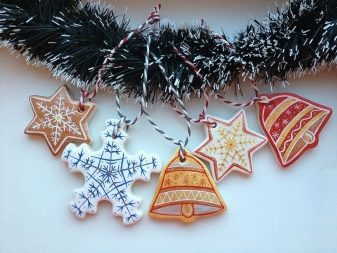
Very distinctive toys are made from textiles. They are called "attic". The technology is very simple: a figurine of the desired design is sewn from a white canvas, stuffed with padding polyester and painted. But it is precisely in the coloring that the main highlight lies: in order to give the product the effect of antiquity, it is covered not with simple paint, but with white gouache, to which coffee and a little glue are added to fix the coating (PVA is optimal for this). Some also complement the composition with a pinch of vanilla and cinnamon. In this case, the toy turns out to be not just "old", but also fragrant, and the smell sometimes lasts a year or even more.
And, of course, the decoupage technique gives a lot of room for the imagination of creating retro toys. You can buy the simplest Christmas balls, cover them with white paint with glue (in a 1 to 1 ratio), and then use themed napkins to make the desired decor using the proposed technique.
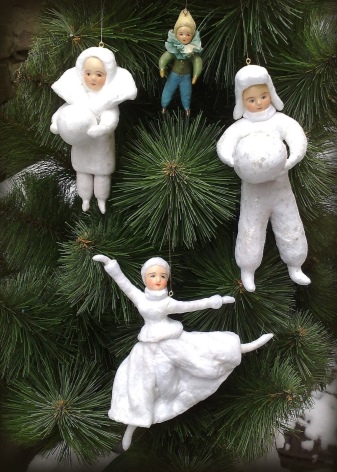
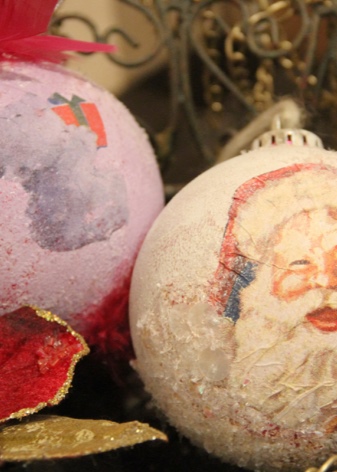
Beautiful examples
The rarest ornaments of the times of the USSR with communist symbols are considered.
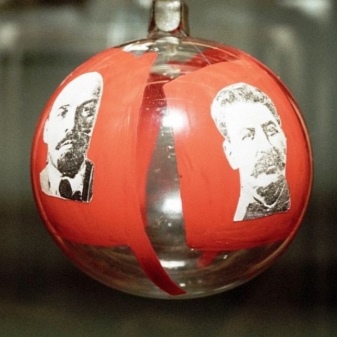
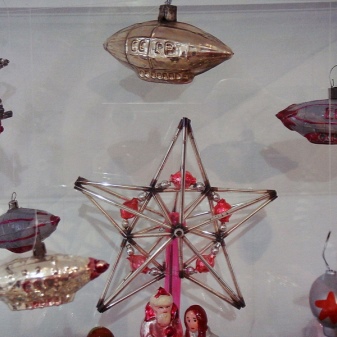
But for most of our compatriots, the Soviet Christmas tree toy is associated with the heroes of good fairy tales and magical animals.
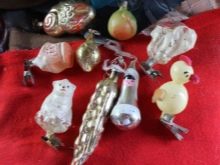
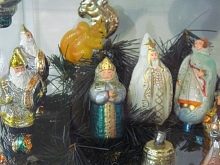
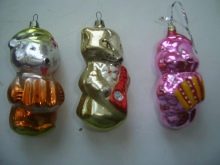
At that time, not only strength was invested in the manufacture of balls, but also the soul. That is why it is simply impossible to find anything like this on the shelves these days.
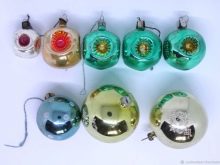
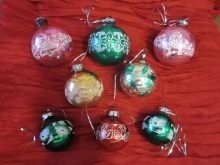
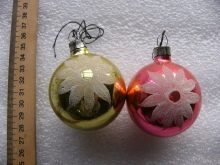
For information on how to make a vintage snowman, see the next video.













The comment was sent successfully.